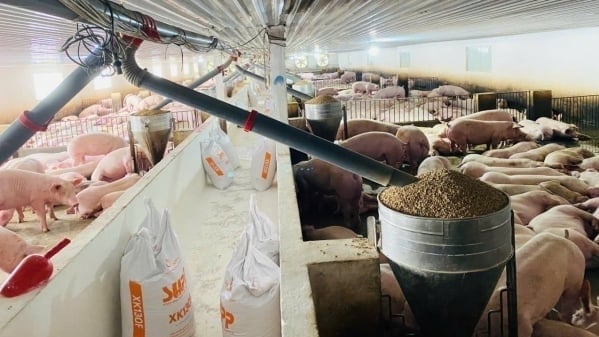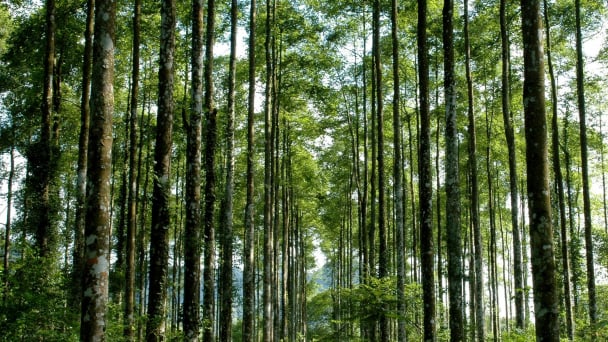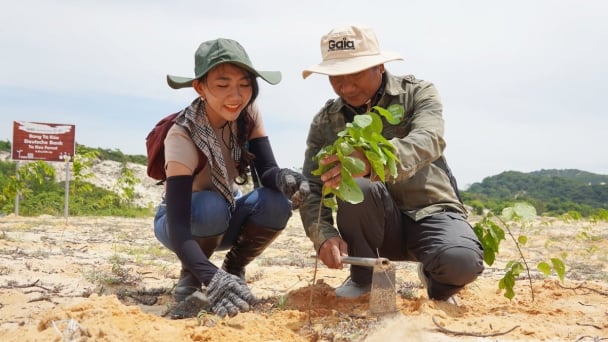September 4, 2025 | 06:20 GMT +7
September 4, 2025 | 06:20 GMT +7
Hotline: 0913.378.918
September 4, 2025 | 06:20 GMT +7
Hotline: 0913.378.918

F1 hybrid rice seeds production. Photo: Le Hung Phong.
In 2014, the northern provinces including the North Central region beyond had a total commercial hybrid rice cultivated area of 644,200 ha, reduced to 605,600 ha in 2015, 531,600 ha in 2016, 479,300 ha in 2017 and 458,000 ha in 2018. The South Central Coast and Central Highlands area reduced about 10-15 thousand hectares annually, and the Mekong River Delta reduced about 7,000-10,000 hectares in rice - shrimp area. Thus, from the first years, the commercial hybrid rice of over 700,000 ha decreased significantly in the last 3-4 years.
According to analysis, the reasons are: Firstly, Currently, there are many pure rice variety groups whose yield is not much inferior to hybrid rice. Secondly, it is the rapid change and structure transformation of varieties of aromatic rice, long-grain white rice, soft and sticky rice, qualified for export. Thirdly, the price of imported hybrid rice is quite high now due to the high price level in China, and we still have to import 65-70% of the annual demand for hybrid rice. Most of them are only above average, not many are aromatic hybrid varieties. Fourthly, the supply of hybrid rice seeds is monotonous as businesses tend to trade in pure rice varieties with copyright, higher profits, proactive in supply and quality control.
With the annual agricultural extension program, the National Seed Program, the State budget has invested to support research, breeding parental lines and producing hybrid rice seeds over the years. As a result of the project, by 2017, Vietnam has produced more than 70 tons of mother lines with TGMS and CMS lines. According to the evaluation and summary of the projects in the 2015-2017 and 2017-2019 periods, regarding parent seeds for domestic hybrid seed production, we are nearly 80% self-sufficient.

F1 hybrid rice seeds production in Yen Bai. Photo: Thai Sinh.
We have, in a basic sense, mastered the hybrid seed production technology, from self-production of lines A (mother line), B (maintenance line), R (father line) with good quality to seeding technology, using regulatory chemicals such as GA3...
Despite the decrease in acreage, hybrid rice is still highly evaluated and accepted by farmers.
Dominant hybrid rice is relatively resistant to external conditions, especially in difficult areas and soils with limiting factors such as salinity, alum, waterlogging... Hybrid dominant rice is superior to pure rice. Most dominant hybrid rice varieties are resistant to blasts and some other major pests and diseases. Currently, both in Vietnam, as well as in China, there have been and will be improved hybrid rice varieties, selected and created by applying ideal genetic phenotypes technology, with rice quality meeting the needs of both domestic and export markets.

Many hybrid rice varieties of Vietnam have been improved, with quality getting higher and higher.
Given the position and advantages of hybrid rice, in the context of reduced rice land due to conversion purposes, rice production needs to be stabilized in terms of output, shifting towards sustainable, favorable, and organic farming in specific areas, it is necessary to have support policy mechanisms for the research, development and production of hybrid rice seeds in the coming years.
In need of a generation of high-quality hybrid rice
Currently, hybrid rice varieties with good quality rice (LY2099, Lai Thong 6, MCH2, VT404, Nghi Huong...) are not enough for production. The basic weakness for quality hybrid rice is that it is difficult to produce F1 hybrid seeds, so the price is still high.
Vietnam should prioritize investment in continuing the hybrid rice development program, opening a new phase:
- Investment in the development of hybrid rice is an investment in disadvantaged areas. In mountainous areas with harsh weather, arid Central region, coastal areas with saline soil, rice-shrimp areas,... the people need hybrid rice because the advantage of hybrid rice in these areas is superior to pure rice.
- Investment in hybrid rice research is an investment for the future. It is about preparing genetic resources, materials, backup for changes in climate and environmental conditions.
- A strategy on a national scale is needed to research quality hybrid rice, increase competitiveness, open a new phase.
- It is necessary to plan the production areas of F1 hybrid seeds with synchronous mechanization, high skills and professionalism.
- It is necessary to cooperate between research institutes and enterprises in F1 hybrid seed production, take advantage of the land fund of the institutes, increase income.
Tran Cao
/2025/09/03/1620-3-160956_644.jpg)
(VAN) Under global requirements, Vietnam is urgently finalizing measurement tools, ensuring data transparency, and completing a legal framework to transform its forest potential into a sustainable resource.

(VAN) Amid the African swine fever ‘storm’, large-scale livestock farms in Lao Cai remain safe thanks to strict biosecurity practices.
/2025/09/02/2302-5-070350_276.jpg)
(VAN) Prof. Dr. Pham Hong Giang, former Deputy Minister of Agriculture and Rural Development, shared his unforgettable memories of constructing large reservoirs and dams in Central Vietnam.
/2025/09/01/2628-2-151932_465.jpg)
(VAN) From the Da Nhim forests with 'wildlife trap-removal knights' to Cuc Phuong National Park, conservation has become a pivotal shift, shaping a modern Vietnamese forestry.

(VAN) The dugong population in Con Dao has been steadily declining due to multiple causes, raising urgent demands for seagrass meadow restoration and tighter control of human impacts.

(VAN) From seedlings to forest carbon maps, science and technology are becoming the 'brain' and 'heart' that guide forestry toward sustainable development and deeper integration into global supply chains.

(VAN) Vietnam is increasingly vulnerable to the impacts of climate risks and natural disasters. Without timely adaptation measures, climate change could cause the nation’s GDP to shrink significantly.